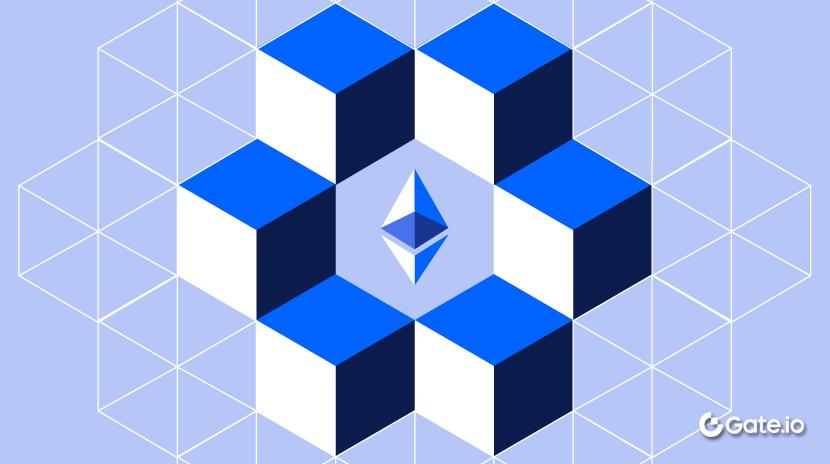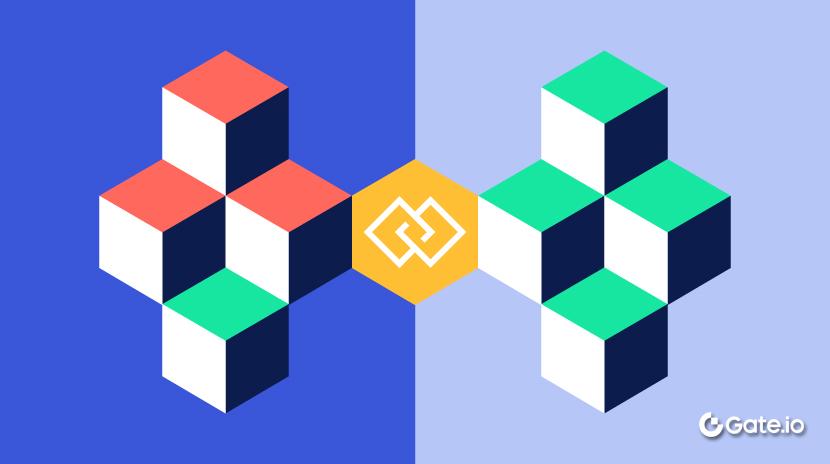La primera computadora compartida del mundo: Cómo Bless convierte los dispositivos inactivos en ingresos pasivos
Bless es una red de computación perimetral descentralizada conocida como el primer 'ordenador compartido' del mundo. Permite a los usuarios compartir la potencia de computación no utilizada, como los recursos de CPU y GPU de sus dispositivos personales, para soportar aplicaciones de alta demanda como IA, aprendizaje automático y análisis de datos. A cambio, los usuarios son recompensados por contribuir con sus recursos.
Para los desarrolladores, Bless ofrece una alternativa a los servicios en la nube tradicionales al acercar la computación a los usuarios, reduciendo la latencia y los costos de infraestructura. En este artículo, analizaremos la tecnología central de Bless, cómo funciona, su posición en el mercado y cómo funciona su sistema de recompensas. También echaremos un vistazo a sus desarrollos recientes, perspectivas de inversión y riesgos potenciales.

Fuente: https://x.com/theblessnetwork
Bendita Arquitectura Técnica
Adopción de módulos WebAssembly (WASM)
En la red de Bless, cada dispositivo participante funciona como un miniordenador independiente, formando colectivamente un poderoso "ordenador compartido." Por ejemplo, su teléfono, portátil o incluso una tableta en casa puede contribuir automáticamente con recursos informáticos durante los períodos de inactividad, simplemente instalando la aplicación Bless y colaborando con otros usuarios en todo el mundo para procesar tareas.
Los desarrolladores empaquetan tareas informáticas en WebAssembly (WASM)—como un conjunto de herramientas estandarizadas que funciona en diferentes tipos de dispositivos. Además, el marco de nodo incrustado ("nnApp") dentro de la aplicación conecta automáticamente su dispositivo a la red compartida cuando utiliza una aplicación compatible con Bless, lo que le permite contribuir con potencia de cálculo.
Además, Bless permite que cada aplicación elija un adecuado algoritmo de consensobasado en sus propias necesidades para verificar tareas y distribuir recompensas, lo que hace que el sistema sea más flexible y eficiente. Su diseño no se limita a una sola cadena de bloques, es compatible con variasCadenas de Capa 1 y Capa 2creando un ecosistema diverso y abierto.
Distribución automática de tareas a múltiples nodos
La red Bless asigna automáticamente tareas de computación a los dispositivos más adecuados. Cuando un desarrollador envía una tarea, el sistema evalúa primero la CPU, la memoria, el ancho de banda y el tiempo de finalización requeridos. Luego selecciona dispositivos de nodos globales que están geográficamente cerca y tienen recursos suficientes para procesar la tarea. Esto es similar a los servicios de entrega de alimentos, que asignan automáticamente al mensajero más cercano para garantizar un servicio rápido y eficiente.
Si la tarea es grande, Bless la dividirá en varias tareas más pequeñas, que serán procesadas en paralelo por diferentes nodos. Esto evita sobrecargar un solo dispositivo y utiliza un método de distribución aleatorio para garantizar la equidad.
Durante el cálculo, todos los datos se transmiten en forma encriptada. Si un nodo necesita más datos, puede recuperarlos de soluciones de almacenamiento descentralizado como IPFSoArweave. Una vez que se completa la tarea, otros nodos regresan y verifican los resultados. Solo después de la verificación se entrega el resultado al desarrollador, mejorando significativamente la precisión y confiabilidad de los resultados de la computación.

El mecanismo de computación distribuida y programación de carga de Bless (Fuente: Bless Network Litepaper)
Comparación con Servidores en la Nube Tradicionales
Bless ofrece a los desarrolladores una plataforma completamente nueva que les permite construir aplicaciones de alto rendimiento y baja latencia sin la necesidad de invertir en costosos servidores tradicionales en la nube.
Comparado con los servicios en la nube centralizados, la informática perimetral descentralizada de Bless tiene tres ventajas distintas:
- Costo más bajo: Al utilizar dispositivos inactivos en todo el mundo, Bless puede proporcionar servicios informáticos a un costo más bajo, reduciendo los gastos de infraestructura para los desarrolladores.
- Respuesta más rápida: dado que las tareas se ejecutan en los nodos más cercanos a los usuarios, se reduce en gran medida la distancia de transmisión de datos y la latencia, lo que es ideal para aplicaciones que requieren capacidad de respuesta en tiempo real (como el procesamiento de datos de IoT o plataformas de interacción en tiempo real).
- Mayor soberanía de datos: el procesamiento de datos en Bless está distribuido en muchos nodos en lugar de concentrarse en unos pocos grandes centros de datos. Los usuarios tienen un mayor control sobre sus datos y recursos, y la privacidad y la seguridad están mejor protegidas a través de técnicas criptográficas.
Los desarrolladores pueden implementar sus propias aplicaciones descentralizadas (GatedApps) directamente en Bless. Bless proporciona herramientas de línea de comandos y un marco WASM para ayudar a empaquetar fácilmente tareas de computación y enviarlas a la red. El sistema luego selecciona automáticamente los nodos más adecuados para el procesamiento y devuelve los resultados, eliminando la necesidad de construir sus propios servidores.
Además, Bless es compatible con múltiples cadenas de bloques, lo que significa que los desarrolladores pueden ejecutar partes de su aplicación (como transferencias de tokens o gobernanza) en Gate.com.cadenas públicas, mientras se descarga la computación pesada al entorno fuera de la cadena de Bless, logrando un equilibrio entre rendimiento y descentralización.
Aún mejor, Bless anima a los desarrolladores tradicionales de Web2 a participar. Con simples API o complementos, las aplicaciones existentes pueden integrarse en la red de Bless, convirtiendo a los usuarios en parte del poder de cómputo compartido. Esto permite a los desarrolladores beneficiarse del nuevo modelo, enfocarse en la construcción de excelentes aplicaciones y dejar de preocuparse por los costos del servidor.
Bendiga la Posicionamiento de Mercado & Paisaje Competitivo
Competidores y panorama de la industria
En los últimos años, han surgido muchos proyectos en el espacio de la computación descentralizada—Gate no está solo en este campo. Dentro del DePINen el sector de la red de infraestructura física descentralizada, existen algunos pioneros, como Red de Akash, que se enfoca en la computación en la nube descentralizada y de alto rendimiento, y Red de Golem, un defensor temprano del intercambio de cálculos inactivos. Todos estos son posibles competidores.
También hay proyectos más nuevos como EdgeX, e incluso proyectos como Helium, que originalmente se centraba en la comunicación descentralizada, recientemente ha comenzado a explorar el intercambio de recursos.
En general, la narrativa de "brindar servicios aprovechando recursos inactivos" es bastante popular y el espacio está abarrotado. Para destacarse, Bless debe demostrar una ejecución técnica sólida y un rendimiento destacado.
Fortalezas y debilidades de Bless
En el lado de las fortalezas, la característica más notable de Bless es su arquitectura neutral a la red y su modelo de participación fácil de usar. Con su WASM y un marco de nodo integrado, Bless admite una amplia gama de blockchains y tipos de dispositivos, lo que permite una integración casi perfecta para desarrolladores y usuarios. Los usuarios pueden participar con un esfuerzo extremadamente bajo, simplemente usando una aplicación o una extensión del navegador, pueden contribuir con recursos y ganar recompensas. Esta experiencia es similar a un ingreso pasivo, lo que ayuda a expandir rápidamente la cobertura de nodos de la red.
Bless también se enfoca en la computación en el borde, lo que la hace particularmente atractiva para casos de uso de IA e IoT que requieren baja latencia y procesamiento distribuido. En cuanto a la eficiencia de recursos, sus algoritmos de programación de tareas dinámicas y asignación aleatoria ayudan a distribuir las cargas de trabajo entre los nodos de manera justa, evitando sobrecargar cualquier punto único y mejorando la estabilidad general de la red.
Sin embargo, Gate faces varios desafíos. El primero es el problema del efecto de red: solo cuando suficientes nodos diversos se unen puede Gate igualar la capacidad informática y el alcance de los servicios en la nube tradicionales. En sus etapas iniciales, la cantidad y confiabilidad de los dispositivos de usuario pueden ser insuficientes, lo que conlleva una calidad de servicio inestable (por ejemplo, los usuarios informaron conexiones de nodos inestables durante la red de prueba).
En segundo lugar, la competencia es intensa. Si otras plataformas de computación descentralizada ofrecen recompensas más altas o una integración más fácil, Bless debe seguir innovando para retener a los desarrolladores y operadores de nodos.
Además, educar al mercado para que adopte este nuevo paradigma de "computación compartida" es un desafío significativo, especialmente cuando se trata de ayudar a los usuarios no técnicos a sentirse seguros al contribuir con la potencia informática de sus dispositivos. Construir confianza y un sentido de seguridad es esencial. En general, si bien Bless tiene una base conceptual y técnica sólida, su éxito dependerá en gran medida de la ejecución y el crecimiento del ecosistema para asegurar su posición en este mercado altamente competitivo.

Fortalezas y debilidades de Bless (Fuente: Creador de Gate Learn John)
Oportunidades de mercado y potencial de desarrollo
Desde una perspectiva macro, la demanda global de recursos informáticos está experimentando un crecimiento explosivo, especialmente en campos como la inteligencia artificial, el aprendizaje automático y los modelos de lenguaje grandes. Los modelos tradicionales de computación en la nube centralizada enfrentan problemas como altos costos, cuellos de botella en la transmisión de datos y puntos únicos de falla, creando oportunidades para soluciones de computación descentralizada.
El concepto de DePIN (Red de Infraestructura Física Descentralizada), al cual pertenece Bless, ha recibido una atención creciente por parte de los mercados de capitales en los últimos años, lo que indica que los inversores son optimistas sobre los modelos de intercambio de recursos físicos impulsados por blockchain. En esta ola, el mercado de computación en el borde, en el que Bless se enfoca, es la próxima gran tendencia. Con la adopción generalizada de 5G e IoT, muchos dispositivos con potencial de computación sin explotar podrían integrarse. Si Bless tiene éxito en incorporar estos dispositivos, construirá una vasta red de computación distribuida a nivel mundial.
En otro frente, a medida que las industrias se preocupan más por la privacidad de los datos y la soberanía de los datos, es posible que más empresas recurran a la informática descentralizada para reducir su dependencia de unos pocos proveedores importantes de servicios en la nube. Si Bless puede ofrecer un rendimiento y una seguridad de calidad empresarial, podría expandirse más allá del espacio blockchain y hacia industrias tradicionales que buscan soluciones de informática de borde.
Vale la pena destacar que Bless se posiciona no solo como un mercado de recursos, sino como una plataforma informática orientada a aplicaciones. Esto significa que tiene como objetivo permitir que las aplicaciones ejecuten parte de sus cargas de trabajo directamente en los dispositivos de los usuarios, a diferencia de algunos competidores que simplemente proporcionan arrendamiento de cómputo para que los desarrolladores se integren por sí mismos. Esta estrategia podría fomentar colaboraciones más profundas con los desarrolladores de aplicaciones. Por ejemplo, la incrustación del marco de Bless en los juegos podría permitir a los usuarios contribuir con la potencia de cómputo inactiva mientras juegan, con el diseño de baja latencia de Bless que potencialmente mejora el renderizado en tiempo real. Del mismo modo, Bless puede ayudar a los desarrolladores a implementar modelos de IA directamente en los dispositivos de los usuarios para un procesamiento eficiente de datos en escenarios de inferencia de IA, especialmente útil para aplicaciones como la conducción autónoma o el reconocimiento de voz en tiempo real, donde la velocidad es crítica.
Un modelo de ganar-ganar como este depende de una estrecha colaboración entre Bless y los desarrolladores de aplicaciones. Se espera que Bless se asocie con juegos Web3 de alta demanda computacional o plataformas de inteligencia artificial para lanzar proyectos piloto y validar su modelo de negocio. Además, Bless puede colaborar con proyectos de blockchain públicos como una red informática de capa 2 o complemento, proporcionando potencia informática fuera de la cadena a los sistemas de blockchain.
En conclusión, Bless está operando en un mercado de alto crecimiento y se beneficia de montar dos grandes olas: el auge de la IA y la tendencia de descentralización en Web3. Sus perspectivas de desarrollo parecen muy prometedoras siempre y cuando continúe refinando su tecnología y expandiendo su red.
Bendice Tokenomics
BLS, como el token central del ecosistema Bless, cumple múltiples funciones, incluidas recompensas de incentivo, pagos de transacciones y gobernanza del ecosistema. El sistema distribuye automáticamente tokens BLS en función del rendimiento real de los usuarios que contribuyen con potencia informática inactiva. Este mecanismo permite a los usuarios disfrutar de ingresos pasivos al mismo tiempo que participan en la co-construcción de la red. Más allá de ser una herramienta de recompensa, BLS también es una credencial de gobernanza, otorgando a los titulares el derecho a participar en decisiones importantes, como futuras actualizaciones técnicas o ajustes a los mecanismos de incentivo. A través de este modelo de incentivos justo, transparente y descentralizado, el ecosistema Bless busca garantizar la seguridad de la red y operaciones estables mientras activa la participación en todo el ecosistema.
Cómo obtener tokens BLS
Instalar y ejecutar la extensión de Bless Chrome es la forma más sencilla de ganar tokens BLS. Cuando el dispositivo del usuario está inactivo, el sistema utiliza automáticamente este poder de cómputo inactivo para participar en operaciones de red, y las recompensas de BLS se distribuyen periódicamente según la contribución. Este proceso de ganancia totalmente automatizado es simple y eficiente, permitiendo a los usuarios ganar continuamente sin esfuerzo adicional.
Además, el proyecto ocasionalmente llevará a cabo campañas de airdrop para atraer a usuarios tempranos y ofrecer recompensas BLS adicionales.
Obtenga la extensión Bless Chrome
Staking, Holding, and Ecosystem Governance
Además de obtener tokens compartiendo recursos inactivos, los usuarios también pueden apostar los tokens BLS que han ganado. El mecanismo de apuesta proporciona a los usuarios rendimientos adicionales y ayuda a bloquear tokens, estabilizar la liquidez del mercado y mejorar la seguridad de la red. A través de la apuesta, los titulares de BLS pueden participar en la gobernanza del ecosistema de Bless, votando en decisiones clave como el desarrollo de nuevas funciones, el avance de proyectos de asociación o ajustes en los esquemas de incentivos. Este modelo de gobernanza permite que los usuarios sean más que simples proveedores de recursos, se convierten en co-constructores del ecosistema, promoviendo aún más el desarrollo saludable de Bless en su totalidad.
Bless: Últimas tendencias y actualizaciones de desarrollo
Hitos del Proyecto
Desde su fundación en 2022, Bless ha logrado varios hitos importantes. El desarrollo más notable reciente es el lanzamiento de su Testnet incentivadoa finales de 2024, junto con el lanzamiento de una extensión del navegador Chrome que permite a los usuarios comunes unirse fácilmente a la red y contribuir con potencia informática. Una vez instalado, el complemento comparte automáticamente los recursos inactivos de la CPU/GPU con sitios web y servicios que admiten Bless, sin afectar las operaciones normales del dispositivo.
El lanzamiento de la red de prueba atrajo a muchos usuarios para participar en eventos de distribución de tokens ejecutando la extensión (es decir, proporcionando potencia de cálculo), ayudando a Gate a construir su comunidad de nodos temprana. Al mismo tiempo, el equipo de Gate lanzó varias herramientas y recursos para desarrolladores, incluido el cliente de nodo de código abiertob7s) y documentación para desarrolladores, sentando las bases para el crecimiento del ecosistema.
Bless planea lanzar oficialmente su mainnet en el primer trimestre de 2025. Después del lanzamiento, el equipo se enfocará en mejorar la programación de tareas, la gestión de nodos y en potenciar la estabilidad y seguridad del sistema.
En cuanto aActualizaciones técnicas, según una publicación en X con fecha del 5 de marzo de 2025, Blessnet ha alcanzado 3,000,000 nodos activos, y las pruebas finales de sus versiones CLI y SDK aún están en curso.
Estado de Financiamiento y Antecedentes del Equipo
En el frente del capital y las asociaciones, Bless ha completado dos rondas de financiación, recaudando un total de 8 millones de dólares.
En marzo de 2022, Bless completó una ronda Pre-Seed liderada por NGC Ventures, recaudando $3 millones. En mayo de 2024, completó una ronda Seed liderada por M31 Capital, con Frachtis y otros participantes, recaudando $5 millones adicionales. Otros inversores participantes incluyen fondos de criptomonedas conocidos y jugadores de infraestructura como MH Ventures, No Limit Holdings, Interop Ventures, Plassa Capital y Chorus One. Estos inversores estratégicos proporcionan apoyo financiero, recursos de la industria e influencia. Por ejemplo: NGC Ventures, que se enfoca en inversiones en infraestructura blockchain, podría ayudar a Bless a buscar asociaciones comerciales adicionales. Chorus One, un operador validador líder, puede ofrecer orientación profesional sobre interoperabilidad entre cadenas y estrategias de validación.
En cuanto al equipo, Bless tiene un grupo fundador diverso: el CEO Li Butian fue anteriormente el COO del proyecto blockchain WABI y tiene experiencia en consultoría tradicional. El CTO Derek Anderson tiene muchos años de experiencia en el espacio de Web3 y computación en la nube (anteriormente Líder de Ingeniería en Akash Network). El cofundador Michael Chen proviene de la división de incubación e investigación de Binance. Esta combinación de antecedentes brinda a Bless una sólida base para el desarrollo a largo plazo.
Bendiga oportunidades de inversión y evaluación de riesgos
Oportunidades de inversión
Aunque el precio de BLS ha seguido disminuyendo desde su emisión, desde una perspectiva de inversión, el sector descentralizado de computación de borde en el que opera Bless todavía tiene un potencial significativo.
Por un lado, la era de la IA y los grandes datos ha creado una fuerte demanda de potencia de cálculo, atrayendo la atención hacia modelos innovadores de suministro de cálculo. Por otro lado, los modelos económicos basados en blockchain ofrecen incentivos efectivos para movilizar recursos individuales. Gate combina ambos y ya ha demostrado viabilidad técnica. Si Gate puede escalar rápidamente su red de nodos manteniendo la calidad del servicio, tiene el potencial de convertirse en un actor clave en la infraestructura descentralizada.
Además, dado que Bless está alineado con el concepto de DePIN, su rendimiento puede fluctuar con la popularidad general del sector. Si la infraestructura física descentralizada se convierte en una narrativa principal en blockchain, Bless podría beneficiarse de la marea creciente, atrayendo más capital y asociaciones.

A partir del 10/03/2025 - Tendencia de precios de BLS (Fuente: Gate.com)
Evaluación de riesgos
A pesar de su potencial, invertir en Bless requiere una cuidadosa consideración de varios riesgos:
Riesgo de Implementación Tecnológica
Si bien el concepto detrás de Bless es sólido, operarlo con éxito a escala requiere superar varios obstáculos técnicos, incluida la estabilidad de la red, la seguridad de los nodos y los mecanismos antifraude. Si la red principal sufre frecuentes desconexiones o errores computacionales, podría socavar la confianza de los inversores.
Incertidumbre de los Efectos de Red
Bless debe atraer suficientes nodos de usuarios y desarrolladores simultáneamente para crear un bucle de retroalimentación positiva. De lo contrario, podría caer en un dilema de "huevo y gallina": sin usuarios no hay aplicaciones, y sin aplicaciones no hay demanda de potencia de cálculo. En contraste, los servicios de nube centralizados ya tienen una gran base de clientes y ofertas maduras, lo que dificulta que Bless cambie los hábitos de los usuarios.
Riesgos Regulatorios y de Seguridad
La computación compartida implica acceder a dispositivos de usuario y potencialmente manejar datos sensibles. Los reguladores en diferentes países pueden examinar la legalidad y el cumplimiento de dichos modelos. Además, si los piratas informáticos intentan comprometer el consenso de Bless o los mecanismos de asignación de tareas, podría provocar interrupciones en el servicio o un mal uso de los recursos informáticos, lo que requeriría actualizaciones de seguridad constantes por parte del equipo.
Riesgo de la economía de tokens
El valor futuro del token BLS dependerá de la demanda de aplicación del mundo real y la especulación del mercado. Si el progreso del proyecto se retrasa o el mercado de criptomonedas se debilita, BLS podría experimentar una volatilidad significativa. Los inversores deben estar preparados para tolerar este nivel de riesgo.
En resumen, Bless es un proyecto de infraestructura descentralizada en una etapa temprana con un alto potencial de crecimiento y riesgos inherentes. Los inversores deben monitorear hitos técnicos, la adopción del ecosistema y desarrollos de competidores. Si confías en la capacidad del equipo para ejecutar y en la necesidad del mercado de tal solución, Bless puede valer la pena observar, pero no ignores los riesgos. Se recomienda un enfoque de inversión diversificado y a largo plazo.
Conclusión
Bless introduce una nueva fuerza descentralizada en el panorama actual de la computación en la nube. A través de su arquitectura técnica innovadora y sus mecanismos de incentivos, Bless agrega el poder de cómputo inactivo de todo el mundo en una red de computación global. Reduce costos y latencia mientras empodera a los usuarios para convertirse en participantes activos y beneficiarios del ecosistema.
En comparación con el tradicional modelo de servicios en la nube de "recursos centralizados, los usuarios pagan", Bless ofrece un nuevo paradigma de "recursos descentralizados, los usuarios ganan recompensas". Si esta idea disruptiva tiene éxito, podría remodelar la forma en que las personas interactúan con Internet.
Por supuesto, como un proyecto emergente, Bless todavía enfrenta muchas incertidumbres en su desarrollo futuro. Se necesitará tiempo para validar la estabilidad de la tecnología y la sostenibilidad del modelo de negocio. Sin embargo, posicionado en la intersección de dos tendencias importantes: IA y blockchain, Bless está abordando puntos críticos con una solución clara, lo que lo convierte en un proyecto digno de seguir.
Bless proporciona un vistazo a un nuevo mundo informático para aquellos interesados en el futuro de la computación descentralizada, construido y poseído por sus usuarios, donde el valor se comparte a través de la red. Con el lanzamiento de la red principal y la expansión del ecosistema por delante, el tiempo dirá si Bless puede cumplir su visión y asegurar un lugar en este espacio altamente competitivo, abriendo un nuevo capítulo en la computación distribuida.
Artículos relacionados

¿Qué es Tronscan y cómo puedes usarlo en 2025?

¿Cómo apostar ETH?

¿Qué es SegWit?

¿Qué es HyperGPT? Todo lo que necesitas saber sobre HGPT

¿Qué es la Billetera HOT en Telegram?


